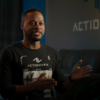Godzilla Minus One: Oscar-winning VFX on a Budget
How Shirogumi used ActionVFX to create VFX that won an Oscar® on a budget.
If you’re looking for 2023’s standout films, Godzilla Minus One is hard to miss. Not only did it tell a compelling story—something fans often felt was missing in previous Godzilla films—but its visual effects were phenomenal. And to top it all off, the film’s VFX team at Shirogumi walked away with a well-earned Oscar® for Best Visual Effects, marking the first time a Japanese film has won an Academy Award® for VFX.
What’s even more impressive? They did it all on a $15 million budget, while most blockbusters cost well over $150 million. We’re excited that ActionVFX was one of the key resources Shirogumi compositors used to streamline production and create hollywood-level VFX.
With so many high-budget films downplaying or even lying about the work of VFX artists, it’s refreshing to see the artists at Shirogumi getting the recognition they deserve for their extraordinary VFX in Godzilla Minus One.
We had the privilege of interviewing Ryo Matsumoto, one of the nine compositing artists at Shirogumi’s Chofu Studio. Ryo’s team won the Oscar® for Best Visual Effects for their work on the film. Ryo gave us a behind-the-scenes look at Godzilla Minus One and talked about how ActionVFX helped them create award-winning VFX on a budget.
Watch the full interview:
Shirogumi: The VFX Studio Behind Godzilla Minus One
Shirogumi is one of Japan’s top VFX studios, known for handling 3D animation, simulations, and complex effects on limited budgets. You might have seen their work in Parasyte 1 and 2 or The Eternal Zero. But with Godzilla Minus One, they’ve taken things to the next level.
VFX in Godzilla Minus One
Godzilla Minus One features 610 VFX shots, making up an incredible two-thirds of the entire movie. The VFX team responsible for the film consisted of 35 artists, 9 of whom were responsible for compositing. They used a mix of Nuke for compositing, Houdini for simulations, and Maya and Blender for CG.
Ryo explained, “In order to make the best use of limited resources, each of us had several different roles other than working on individual shots. Some of us were on set, some worked on previews, R&D, or look development. Some worked on both CG and compositing.” Ryo himself was responsible for compositing 88 shots. He also worked on look development and creating Python scripts for Nuke.

Shirogumi’s success really boiled down to smart use of resources, a talented team, and great communication with the director.
Streamlined Approval Process Led to Better Communication
Unlike many large VFX teams that deal with long approval chains, Shirogumi had a major advantage—writer and director Takashi Yamazaki was also the VFX supervisor. This meant the artists had direct access to him for feedback.
“The director is usually stationed in the studio, so we, the artists, can ask him to check our shots whenever we're ready. Once we get approval from the director, we are free to improve the quality as much as we want. Sometimes we even suggest adding new shots if we think that makes it better,” Ryo shared.
Limited Practical Effects Helped Them Stick to a Budget
With a modest budget, the use of practical effects was limited. Instead, CG set extensions and VFX elements from ActionVFX helped build the realistic scenes, saving millions of dollars.
For example, as Yamazaki mentions in this breakdown, all of the ships in the film use the same practical set, and illusions of movement were created using a combination of cranes and actor performance.
This scene of Godzilla destroying a CG city showcases the phenomenal work of Shirogumi’s VFX artists:
This breakdown does a good job of showing how intricate the VFX team’s work needed to be, but also how effective it was.
Far from being a disadvantage, their use of VFX allowed them to tell a story that would not be possible without the technologies of our day. Godzilla’s head alone had a 200 million polygon count. As director Yamazaki said in an interview, “Before all the digital technology and what we have access to today, when Godzilla was still filmed using a suit, a lot of the physical limitations of a rubber suit implied that it was only the size of a human. That limited what filmmakers could do with things like the level of detail regarding how Godzilla affects its surrounding water or the destruction of cities.”
Maybe Christopher Nolan should have gotten the memo from Yamazaki…
ActionVFX Stock Footage Saved Time & Money
One of the tools that gave the team at Shirogumi a significant leg up was the availability of VFX stock elements. Specifically, the team leaned on ActionVFX’s assets.
If you’re not familiar with VFX stock elements, here’s a quick explainer:
Ryo explained how critical these elements were: “There are times when you just need to place atmospheric smoke, fire, or dust explosions around Godzilla's feet. That's when ActionVFX comes in handy.” He also noted that using pre-shot, realistic elements helped ground the CG sequences, creating a more believable final product.
Here's a reel highlighting some scenes using a wide variety ActionVFX collections like Dust Waves Vol. 1, Dust Explosions Vol. 1, Ground Bursts, and more:
More importantly, using pre-made VFX elements from ActionVFX saved the team a tremendous amount of time and allowed them to focus on polishing other areas of the film. As Ryo added, “Even if you have a schedule with plenty of time, with the extra time you get from using such assets, you can work on something else to improve the quality—or you can just go home and take a rest.”
It is a huge honor that the team at Shirogumi relies on our assets so much. As Ryo told us, "When it comes to pre-made VFX assets, the first thing that comes to our mind is ActionVFX."
You can download the smoke, fire, and explosion assets Shirogumi used in our library.

Takeaways from Godzilla Minus One for VFX Artists and Studios
Versatility Wins: On smaller-budget projects like Godzilla Minus One, the ability to take on multiple roles—whether it's compositing, CG, or writing custom scripts—can be a game-changer. Being flexible and proficient in tools like Nuke, Maya, Blender, or Houdini allows you to contribute more across the board.
Clear Communication is Key: Direct access to decision-makers like the director helped the team work faster and make better choices. It also gave the artists more creative control over the movie.
Make the Most of What You Have: Shirogumi relied on set extensions, FX simulations, and ActionVFX stock footage to pull off some incredible scenes. If they can impress audiences with a $15 million budget, so can you!
Stock Footage Saves Time: Using stock elements from ActionVFX helped the team work faster and add details to make the visuals more grounded and realistic. That extra time let them focus on the finer details—and, sometimes, even head home a little earlier!
Godzilla Minus One shows what can happen when a talented VFX team gets creative with limited resources. By being smart with their tools and working well together, Shirogumi managed to produce an Oscar®-winning film that rivals big-budget blockbusters. It’s a solid reminder for VFX artists that sometimes creativity and teamwork matter more than how big the budget is.
You Can Use Oscar-Worthy VFX Assets
New to ActionVFX? Our library of over 11,000 hollywood-quality VFX assets are trusted by 300,000 VFX artists and studios worldwide. We are proud to be relied on by visual effects teams for blockbuster movies, games, and shows like Avengers: Endgame, Spider-Man: Far from Home, Stranger Things, The Walking Dead, Call of Duty, and many more.
The ActionVFX library contains a wide variety of VFX assets from massive explosions or atmospheric effects to beetles and blood stains; and new assets are added every month. If these would help streamline your VFX workflow like they did for Shirogumi, explore our library!
ActionVFX socials: YouTube - Facebook - Instagram - X - TikTok - Linkedin



